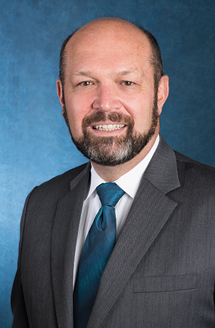
Dr. Friedberg
I am certain you will be asked (often by someone well into the process of creating a budget) to quantify your value to the institution. Because this is virtually inevitable, we should anticipate it and formulate a succinct response. For example, one might say that we know how to ask the right questions, to work with complex systems, or to keep stuff from blowing up. Ideally, we can transition from there to the real answer: Our value lies more in how we think than in what we do.
Converting medical data into usable medical information can be tremendously complicated, offering abundant opportunities for entanglement in minutiae. Given the number of data points and levels of complexity, one would logically expect that entropy would follow its natural course until disorder prevailed. But in medicine, that doesn’t often happen.
The hospital CEO with a well-managed laboratory is rarely called to grapple with the fallout of a diagnostic disaster. Why? Because the pathologists and laboratory professionals think about the things nobody else thinks about and consider them in a controlled, process-focused way. They preemptively establish and maintain systems to unearth the questions that haven’t been asked. What further tests should be run? What alternative diagnoses should be entertained? What do we not see that should be there? Rigorous habits of thought enable pathologists to sense when something is not quite right. Recognizing the questions that haven’t been asked is what intellectual rigor is all about. In other words, our affinity for precision and intellectual rigor keeps stuff from blowing up.
Pathologists are medicine’s scientists. We like complexity and know how to make it work for us. Someone else’s quandary is our appetizer. That is our niche.
In 1951, the CAP released the first CAP Certified Standards, which have evolved into today’s robust proficiency testing program. Eleven years later, we established the CAP Commission on Laboratory Inspection and Accreditation. These activities provide one of the most effective quality assurance programs in all of medicine that most people have never heard of.
A culture of rigor ensures patient safety and strengthens peripheral vision. That same drive brought us to launch the Pathology and Laboratory Quality Center eight years ago. We needed it, so we created it. Working with multispecialty partners, Center teams have developed nine practice guidelines that capture essential elements of pathology and laboratory medicine from multiple points of view. Eleven more guidelines are in development.
There’s a great story in the introduction to Jordan Ellenberg’s best-selling book, How Not to Be Wrong: The Power of Mathematical Thinking, about Abraham Wald, a mathematician and professor of statistics at Columbia University in New York during World War II.
Professor Wald (who would have made a great pathologist) was recruited to the Statistical Research Group (SRG), a classified project that brought together some of the best mathematical minds of the time in what Ellenberg describes as “something like the Manhattan Project, except the weapons being developed were equations, not explosives.”
The U.S. military had a problem. Our fighter planes were returning from sorties over Europe covered with holes, but the damage was not uniformly distributed—the fuselage and tail would always look a lot worse than the engines. They asked the SRG to figure out why and come up with fuselage design improvements that would protect pilots and crew without slowing them down too much.
Wald’s approach reflected a mathematician’s comfort with the abstract. He had just one elegantly simple question. Since the damage should have been evident over the whole plane, he asked, why did the planes have so little damage in the engine casing? Because the holes they weren’t seeing in the engines were on the planes that didn’t come back.
As Ellenberg observes, there were more planes with damage in the fuselage than the engine casing for the same reason there are more patients in recovery rooms with bullet holes in their legs than in their chests. It’s not that people get shot in the chest less often than in the legs; it’s that those who are shot in the chest are less likely to make it to the recovery room. So we look for clues in the planes that don’t come back—and in the patients who didn’t survive.
Abraham Wald approached the problem in much the same way that a seasoned Laboratory Accreditation Program inspector absorbs critical information on the initial walk-through. Thoughtful observation cultivates this ability, and we nourish it with constant practice. Because left to itself, entropy wins. So we leave nothing to chance.
We need to continue to seek the right questions because answering the wrong question doesn’t help. Collecting data on those who get well will not tell us all we need to know about those who did not. When we take the time to explain what goes on in our black box, others will begin to see the value in thinking like a pathologist.
Some see pathology in the same way they regard higher mathematics—so complex that they don’t even try to understand it. Who needs to know how it’s done when it’s always done right? In a coordinated care environment that lives and breathes performance metrics, a lot of people need to know how we fit in and what we bring to the table. It is in our enlightened self-interest to explain how we think along with what we do. Let’s close that uncomfortable knowledge gap. Those conversations may reveal welcome opportunities.
[hr]Dr. Friedberg welcomes communication from CAP members. Write to him at president@cap.org.
 CAP TODAY Pathology/Laboratory Medicine/Laboratory Management
CAP TODAY Pathology/Laboratory Medicine/Laboratory Management
